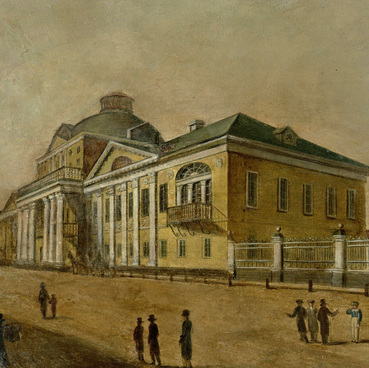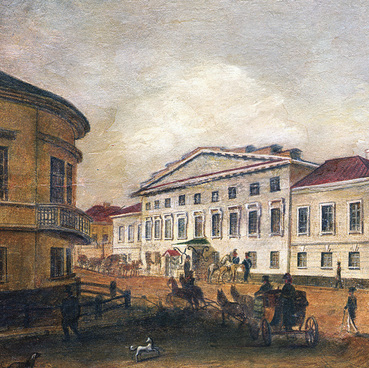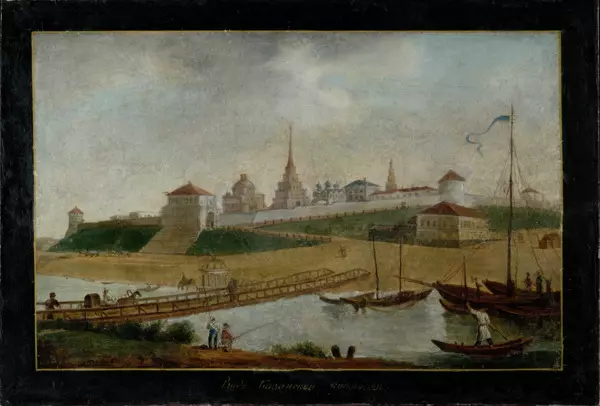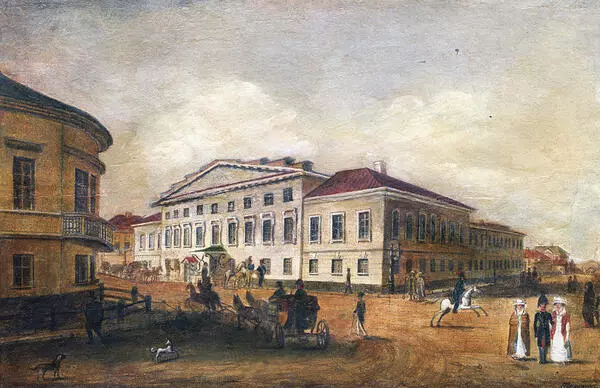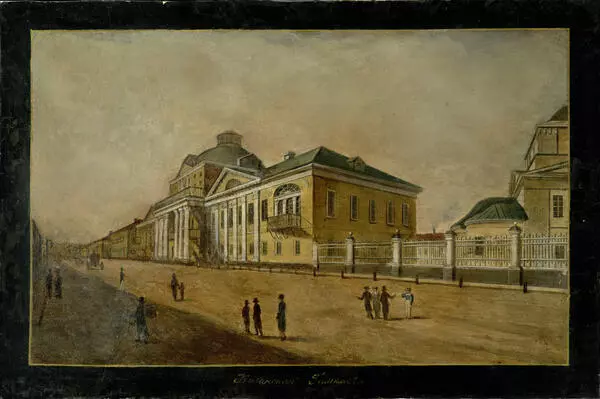Vasily Turin was at the origin of artistic education in Kazan. In addition, the astonishing observation skills and interest in urban architecture allowed the artist to create the most complete image of the city in which Yevgeny Boratynskiy lived from time to time.
Turin has become a part of the art history of the first half of the 19th century thanks to his numerous works in the urban landscape genre. Among them one can see sketches and drawings, as well as calligraphic etchings and engravings, which have enjoyed the unfailing popularity of contemporaries.
The artist studied at the Academy of Arts in Saint Petersburg, and then moved to Kazan and started working as a painting teacher at the Main Public School. Many of his students went on to study at the Academy of Arts. Around 1815 he also founded a private drawing school in Kazan, which existed until 1834.
For many years Turin studied the peculiarities of architecture and everyday life of Kazan. Based on his own observations, he made a number of drafts, sketches and studies about Kazan. The most known of his albums is the album of eight lithographs ‘Perspective views of Kazan, the principal city of the governorate, drawn from nature, lithographed and published by Vasily Turin’. It was printed in Moscow in 1834.
On this calligraphic etching from the National Museum of the Republic of Tatarstan Turin depicted the perspective of Voskresenskaya Street - one of the oldest and most beautiful streets in Kazan. The building of the Kazan Seminary, built in the middle of the 18th century is in the center of the etching.
At the beginning of the 19th century, the Theological Seminary was located here. The following people studied there: orientalist Jacinth Bichurin, professor Afanasiy Schapov, professor Peter Znamenskiy. After the fire of 1858, the building was rebuilt.
It is known that it occupied an entire block. The seminary itself was located on the second floor. The first one had merchant shops, shops and one of the city’s most famous photoshops. After the revolution, the building was transferred to Kazan University. It currently houses the Geological Building of the Kazan Federal University.
Turin has become a part of the art history of the first half of the 19th century thanks to his numerous works in the urban landscape genre. Among them one can see sketches and drawings, as well as calligraphic etchings and engravings, which have enjoyed the unfailing popularity of contemporaries.
The artist studied at the Academy of Arts in Saint Petersburg, and then moved to Kazan and started working as a painting teacher at the Main Public School. Many of his students went on to study at the Academy of Arts. Around 1815 he also founded a private drawing school in Kazan, which existed until 1834.
For many years Turin studied the peculiarities of architecture and everyday life of Kazan. Based on his own observations, he made a number of drafts, sketches and studies about Kazan. The most known of his albums is the album of eight lithographs ‘Perspective views of Kazan, the principal city of the governorate, drawn from nature, lithographed and published by Vasily Turin’. It was printed in Moscow in 1834.
On this calligraphic etching from the National Museum of the Republic of Tatarstan Turin depicted the perspective of Voskresenskaya Street - one of the oldest and most beautiful streets in Kazan. The building of the Kazan Seminary, built in the middle of the 18th century is in the center of the etching.
At the beginning of the 19th century, the Theological Seminary was located here. The following people studied there: orientalist Jacinth Bichurin, professor Afanasiy Schapov, professor Peter Znamenskiy. After the fire of 1858, the building was rebuilt.
It is known that it occupied an entire block. The seminary itself was located on the second floor. The first one had merchant shops, shops and one of the city’s most famous photoshops. After the revolution, the building was transferred to Kazan University. It currently houses the Geological Building of the Kazan Federal University.


